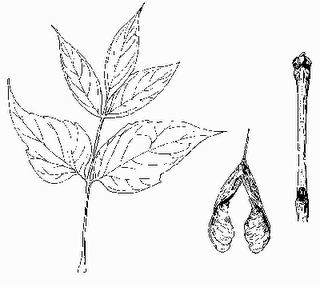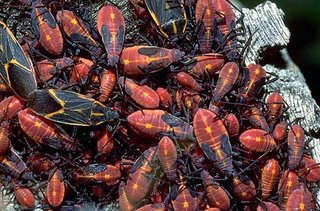Wednesday, November 29, 2006
Whale Sounds!!
Humpback whales possess a vastly more elaborate vocabulary than was known ... Scientists had previously known of a very narrow range of sounds involved in humpback communication. These include calls associated with hunting for fish and long complex songs from male humpbacks linked with mating.
Researcher Rebecca Dunlop at the University of Queensland in Australia monitored humpback sounds from the whales along the east coast of Australia.
"The most surprising thing was there were 35 different types of sounds found.
Underwater sounds included "thwops," "wops," "grumbles," "snorts," "cries," and what are likely underwater blows. Sounds produced at the surface include those generated via breaching or repeated slaps of the tail or fins.
The scientists discovered these sounds have a variety of social uses including to help mothers and calves stay in contact, or as competitive calls among large groups of adults. The whale calls might also be be specific to one sex.
At times humpbacks used sounds specific to male songs for social interactions, mainly when single males joined females. This could mean the song units are the key sexual signals in the male songs [audio], as opposed to song length or loudness, as is the case in some bird species, the researchers said.
Research earlier this year found humpback whales to use grammar, in their love songs. Interestingly, the new study found that a number of sounds were made by lone animals. This suggests their use is not limited to social interactions.
This research could help understand the impact noise from ships and other manmade sounds have on whales. This noise "is increasing in the ocean," Dunlop said. "We don't know how this will affect individuals and populations of whales without first knowing how they communicate in a relatively 'noise-free' environment."
The researchers will report their findings Dec. 1 in Honolulu at a joint meeting of the Acoustical Society of America and the Acoustical Society of Japan.
Chrispy Goes to the Bats - Who try to take a bat sized bite out of him.


(c) 2006 Chris Perridas
I pulled over to the park to watch the sunset and see if I could get a picture to go with Lovecraft's prose-poem ode to a sunset (see below, another blog entry). I saw a bat, and watched. It did it's usual bat thing, flitting to catch mosquitoes, moths, and what not. I got out and took a few pictures of the moon, the sunset, and then walked closer. The bat was joined by companions, so I thought - go for it. Being dusk, I set the digital camera and flashed away.
That's when I discovered two things. My camera is not made to take bat pictures, and bats do NOT like their pictures taken by flash papparazzi. They started to zip at me and I decided to move away - quickly. Here are a couple of surrealistic bat pictures for you.
My good friend and fellow writer from HL.net sent this to me. He is sure this is what I tried to take a picture of!!

Sunday, November 26, 2006
In the howl of insanity comes a small ... meow

The entire article will be in "comments" below.
On a trip throiugh Louisville, a family who rescued and kept precious a toothless, clawless cat lost it. Heartbroken, that the nervous feline bolted in a blur of a moment, they frantically tried to find it. They left, but asked a number of people to help, and in a miracle that may have used 3 of the cat's 9 lives, it was found.
Hurrah!

Astanax Mexicanus

This excerpt from Science News:
Did Cavefish trade eyes for Good Taste? A certain cavefish seems to have thrown away its eyes for a bigger jaw and a more sensitive palate. The cave fish {Astanax Mexicanus, hereafter A.M.) in Mexico (according to William R Jeffrey of University of maryland: College Park). Its seeming ancestor is a terrestrial dweller. The A. M. has eyes as an embryo, but quickly degenerate. The bigger jaws, more teeth sort of push out the eyes, but the nervous system is enhanced in the taste buds. A special protein drives eye degeneration in cave fish and also enhances the jaw and taste bud enhancements. The enzyme - or lack of it - modifies both A.M. and its surface dwelling ancestor. It seems that to survive, the enzyme was selected so that the cave fish can more appropriately detect its food supply.
Lamark might have found this interesting. In this case, it appears that Darwin and Lamark are both needed to make the case of this evolutionary pathway.
Saturday, November 25, 2006
Whooping Crane Chick Flies!

MILWAUKEE (25 Nov 2006) -- One of the first whooping crane chicks hatched in the wild in more than a century is making more history as it migrates south with its parents from a Wisconsin refuge. The chick, whose sibling apparently was killed by a predator, hatched in June at the Necedah National Wildlife Refuge in central Wisconsin, according to Operation Migration, the group coordinating an effort to establish a second migrating flock of the birds in North America.
Weird Giant Catfish

British fisherman Carl Smith (pictured with friend, Dave Jones) caught a giant wels catfish, dubbed "Jaws," measuring 8 ft in length and weighing a record-breaking 226 lbs. Two friends held tightly onto Smith as he battled the monster fish for 35 minutes. After Jaws was weighed, measured and photographed, he was released back into the River Ebro in Spain.
Friday, November 24, 2006
Amazing bereaved squirel: Strange Maine
As a teaser, you must know there is a great deal of weird action, and people chased by squirrels.
Armadillo Rumored sighted in Kentucky
Ross Gull sighted: Global Warmng?

The Salton Sea, a 35-mile-long lake stretching across the Imperial and Riverside county line, is a popular stop for birds heading south, and Guy McCaskie, co-author of "Birds of Salton Sea," believed he spotted a Ross' gull there a week ago. The appearance of the arctic bird nearly 100 miles east of San Diego would be the first reported in California and would place it hundreds of miles farther south than it had ever been seen. The gull, which normally breeds in Siberia or Greenland, rarely appears south of Alaska, and is only spotted in even the northern part of the lower 48 states every few years.
Thursday, November 23, 2006
Weird Octopus
April 2006, "Why Not Morph", Discover, p. 26.
Sunday, November 19, 2006
Raccoon Story

Story that I believe is true.
My friend, Larry, took scouts camping. One of the folks said they were sleeping, and heard a "zzzzzip". The tent was unzipped, and a raccoon walks in. She jumps up and yells. The raccoon quickly scurries out, then stops and "zzzzzip" zips the tent flap back up.
Next day everyone claims that the person is insane. She dreamed it.
They go out, and come back. Another tent, completely zipped up, has been raided, everything turned topsy turvy and food eaten in a way only raccoons can.
Clearly, the raccooons have somehow learned to be clever. They unzip, eat, and rezip so as to camouflage their tactics.
You be the judge is this incredible and true.
Raccoons Attack!!
I'll attach the entire order in "comments" to save space. Raccoons are clever and highly intelligent. When I moved into my house, the previous owner thought they were cute (they are) and fed them dogfood. Oh no! We moved in and they were trained to come to the back door (and since a generation of raccons in only a few years they had been trained for 3 or 4 generations) and were quite insistent. We cut off the food, trained them to be afriad of us - be very afraid - and now they have migrated to other food supplies and stop offs. They still patrol out of racial memory, but no food, so they move on.
The small raccoons are quite cute - don't we love baby mammals!! I do every now and then leave a watermellon rind out so that I can take aphoto of the young ones inside the melon rind. They do look cute sticking their head up.
One more thing. We've learned that raccoons have a sweet tooth. Leave some m&m's out sometime, and they will go insane. They love them.
If you feed the birds, they will attack bird feeders with a vengeance and they are more dexterous and better problem solvers than squirrels - and you know how insidoous squirrels can be. When all else fails, raccoons will smash a steel bird feeder.
Sunday, November 12, 2006
Box Elder Bug
So, what the heck are they?
When it crossed my mind, I looked through my reference books. No luck. No luck on the net under "ornage and black bug". Then Friday I happened to think to ask our work place exterminator. He has not failed us yet, and so I mentioned it. He was stumped. Then as he walked away, he said catch a few and I'll look at them. Then, he came back and said, you think they could be a box elder bug?
How did I know. We looked on the net together, and sure enough my old mystery stared at me.
I called my minister right away who was very amazed. Then we wondered what a box elder was. Off to the net again. Then today at church, I felt like an idiot. I caught a few frigid bugs (they are practically industructible) in the 40 F weather. And it dawned on me. Our property is filled with box elders. The seeds matched perfectly, and even though all the leaves are gone, I found a few desicated brown specimens that agreed closely with sketches. No wonder.
Anyway, thanks for sharing my "duh" moment with me. !!



Sunday, November 05, 2006
Bigfoot Scientist Under Fire
That makes him an outcast on campus, where many scientists are embarrassed by what they call Meldrum's "pseudo-academic" pursuits.
Meldrum, 48, spends days in his laboratory in the Life Sciences Building, analyzing jumbo plaster casts of Bigfoot footprints. He is convinced he has produced a body of evidence that proves there is a Bigfoot.



